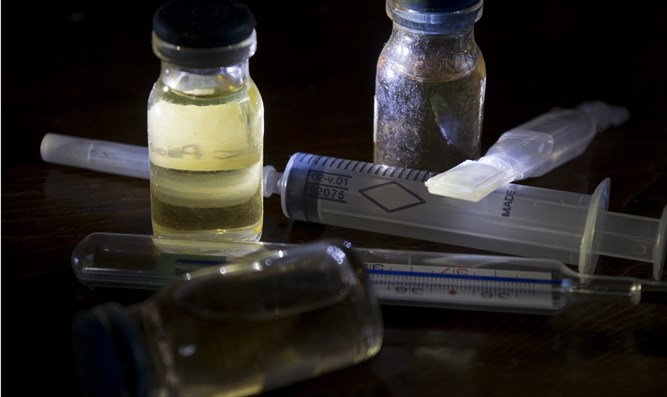Error clouds vaccine results in shot contracted for millions of doses to Israel.
Mordechai Sones , Nov 26 , 2020
AstraZeneca and Oxford University on Wednesday acknowledged a manufacturing error that is raising questions about preliminary results of their experimental COVID-19 vaccine.
The Health Ministry signed a memorandum of understanding with the British AstraZeneca and Oxford University that will provide millions of vaccines to Israel.
The announcement that a cheap, easy-to-make COVID-19 vaccine appeared to be up to 90% effective prompted one British tabloid to emote: “Get yourself a vaccaccino,” noting that the vaccine costs “less than a cup of coffee”.
But since unveiling the preliminary results, AstraZeneca acknowledged a key mistake in the vaccine dosage received by some study participants, adding to questions about whether the vaccine’s touted efficacy will persist.
A statement describing the error came days after the company and the university described the shots as “highly effective” and made no mention of why some study participants didn’t receive as much vaccine in the first of two shots as expected, reports Medical Xpress.
In a surprise, the group of volunteers that got a lower dose seemed to be much better protected than the volunteers who got two full doses. In the low-dose group, AstraZeneca said, the vaccine appeared to be 90% effective. In the group that got two full doses, the vaccine appeared to be 62% effective. Combined, the drugmakers said the vaccine appeared to be 70% effective. But the way in which the results were arrived at and reported by the companies has led to pointed questions from experts.
University of East Anglia Professor in Medicine Professor Paul Hunter responded: “It has been widely reported that the Oxford COVID-19 had an overall efficacy of just 70% compared to 90% for the Pfizer and Moderna mRNA vaccines. But those people who were given half the original dose for the first injection had an efficacy of 90% and this has become the headline figure in many reports. So the promising interim results of the Oxford vaccine are based on a subgroup analysis, the subgroup given the correct dose and the subgroup given an incorrect (half) dose according to protocol. The efficacy in those people receiving the correct dose according to protocol was only about 62% compared to over 90% found in the previously reported mRNA vaccine results.
“Subgroup analyses in randomized controlled trials are always fraught with difficulties. Subgroup analyses increase the risk of type 1 errors (i.e. where an intervention is considered to be effective when it is not). Despite the increased risk of type 1 errors, there are certainly arguments in favor of sub-group analysis in RCTs. However, any subgroup analysis should be specified in the protocol in advance and the RCT should be sufficiently powered for the sub-group analysis in order to have faith in the results. As Brookes and colleagues wrote in 2001 ‘While it is generally recognized that subgroup analyses can produce spurious results, the extent of the problem is almost certainly under-estimated’ and ‘Subgroup-specific analyses are particularly unreliable and are affected by many factors’.
“The results of subgroup analyses are likely to be less precise, especially if, as appears to be the case here, that rather fewer people were recruited into the half dose rather than for the full dose regimens. We will have to wait final results to be reviewed by the appropriate regulatory authorities before we can be confident that the claim of 90% effectiveness with the half-dose regimen is robust.”
Source: Arutz Sheva
